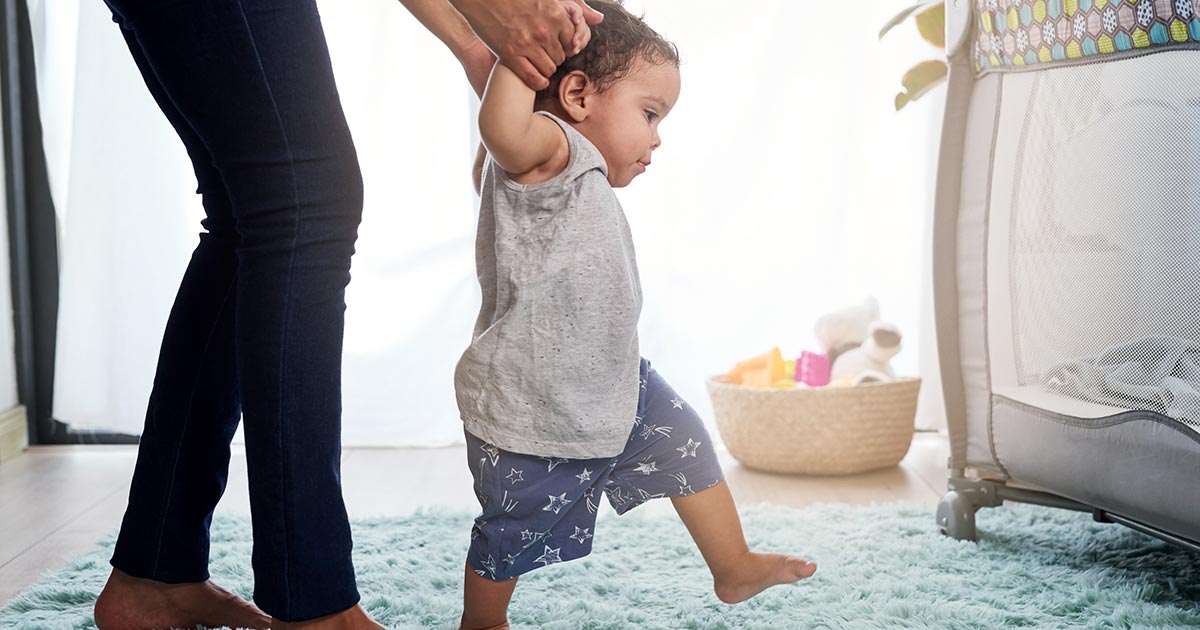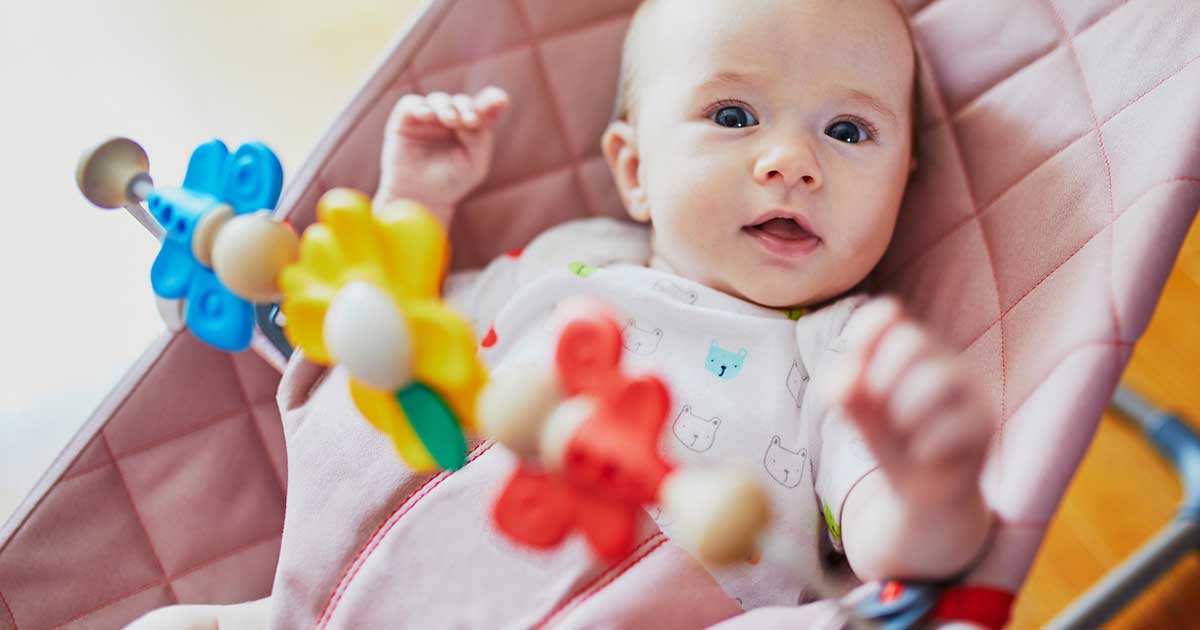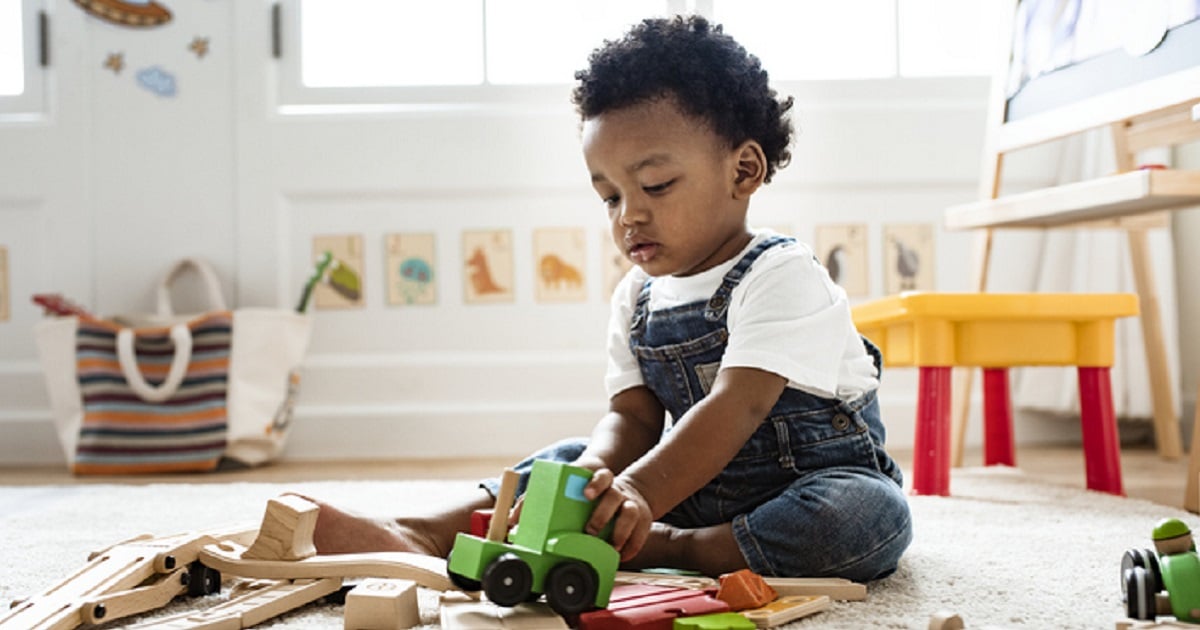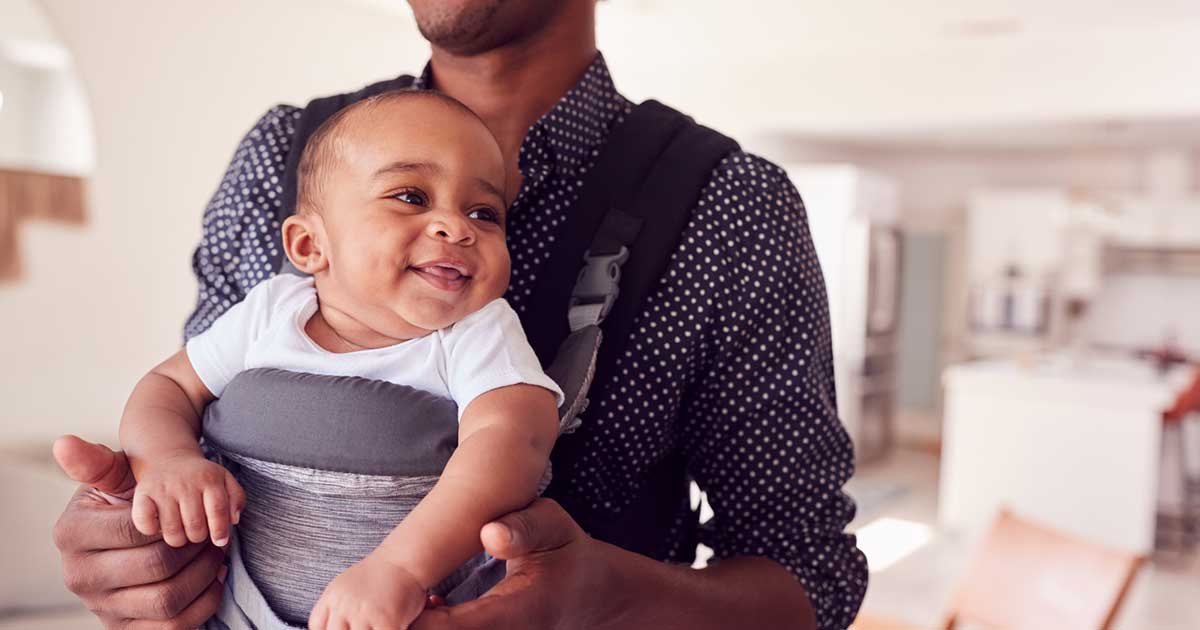
Advice to improve your movement, fitness, and overall health from the #1 in orthopedics in the U.S.
Are Bouncers Bad for Your Baby’s Development?
It’s important to use these devices correctly to ensure your baby’s safety and proper growth.
Advice to improve your movement, fitness, and overall health from the #1 in orthopedics in the U.S.

To back up a bit, when babies are in the womb, they have less and less room to move as the pregnancy progresses. In the later stages of pregnancy, babies are forced to tuck their knees and hips up against their torso into what’s known as the fetal position. “Right after birth, babies tend to have a natural tightness in their knees, hips and ankles,” says Magdalena Oledzka, PT, DPT, PhD, MBA, PCS, a pediatric physical therapist at HSS. It takes several months for the joints to stretch out naturally.
Healthy Hip Development
Though the research is still mixed, there may be a link between baby carrier devices and hip health. So parents need to be careful about what products they put their baby in for the first six months of life.
Because babies’ hips are still developing, the best position for their legs to be in is what Oledzka calls the “frog position,” which is when the hips fall naturally apart to the side, the baby’s bottom is lower than their knees and their knees are bent and thighs are supported (imagine the legs form the letter M).
“This will create the force necessary for the hips to develop properly,” says Julie Tan, PT, DPT, also a pediatric physical therapist at HSS. “The hip is a ball-and-socket joint. You want the head of the femur – which is the ball – to put pressure on the acetabulum, which is the socket.”
On the flip side, if babies’ legs are forced into a straight, stretched-out position for long periods of time, the ball may rub into the edges of the socket. Since the sockets are made of soft cartilage, this friction may cause them to form improperly, leading to a condition called hip dysplasia. Sometimes the ball could even slip completely out of the socket, causing a hip dislocation. What’s more, your baby won’t be bothered by either of these issues, so they could go undetected for a while.
The Problem with Bouncers
Another concern with devices is that they may cause developmental delays. Jumper-type devices can be particularly problematic if they’re used too early. “There’s a misconception that these bouncers help strengthen babies’ legs and help babies progress to standing and walking, but that’s not actually the case,” says Tan. When a baby is in these types of devices, they’re not actually activating their muscles. “Babies bend and extend their legs as a natural reflex,” she adds.
Additionally, babies often stand on their tiptoes when they’re in these devices, which is not healthy to do for a long time. They also tend to throw their bodies backwards in the jumping motion; over time, this could lead to asymmetrical muscle strength development with more strength in the extensor muscles and weakness in the front of the body.
Safety First
All of the above is not to say you should never use any of these devices. Just make sure you do it safely. To prevent injury to both you and your baby when wearing your baby in a sling or carrier, before every use, confirm that all straps and fastenings are secure and that your baby can’t fall out. Be mindful not to lose your balance, always bend at your knees (not your back) and support your baby with one or both hands. Check on your baby frequently to make sure you can see his face and that nothing’s blocking his nose or mouth. And always check that your baby’s age, height and weight meet the product guidelines.
When using these and other devices, make sure your baby can look right and left and use their limbs equally, so both sides of their upper body can develop symmetrically. And don’t overuse them. “If you need to place them in one of these devices to free up your hands for a bit, go for it, but don’t leave them there for hours at a time,” says Tan.
In addition to using carriers, make sure to give your baby plenty of playtime in non-holding devices that promote mobility, like play mats, playpens and activity gyms.
If you are concerned about hip dysplasia, Oledzka suggests that the next time you change your baby’s diaper, bring the legs close together and see if they appear the same length. Then take a look at the fat folds to see if they align. “If not, don’t panic – hip dysplasia is quite uncommon, so it’s likely not that. Just bring it to your pediatrician’s attention at your baby’s next visit.”
Published 6/22/2023


